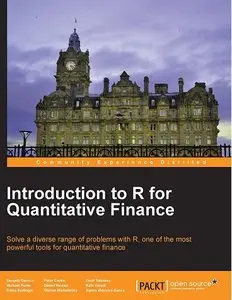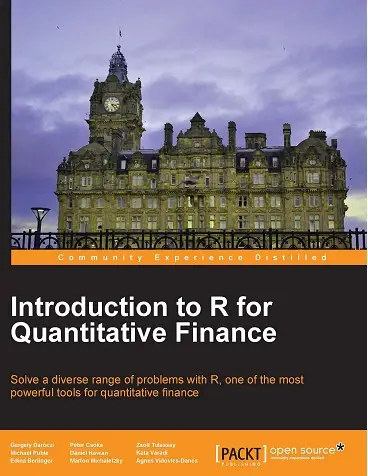Introduction to R for Quantitative Finance by Gergely Daróczi, Michael Puhle, Edina Berlinger, Péter Csóka, Daniel Havran, Márton Michaletzky, Zsolt Tulassay, Kata Váradi, Agnes Vidovics-Dancs
2013 | ISBN: 178328093X | English | 164 pages | PDF | 4 MB
2013 | ISBN: 178328093X | English | 164 pages | PDF | 4 MB
Solve a diverse range of problems with R, one of the most powerful tools for quantitative finance
Overview
Use time series analysis to model and forecast house prices
Estimate the term structure of interest rates using prices of government bonds
Detect systemically important financial institutions by employing financial network analysis
In Detail
Introduction to R for Quantitative Finance will show you how to solve real-world quantitative finance problems using the statistical computing language R. The book covers diverse topics ranging from time series analysis to financial networks. Each chapter briefly presents the theory behind specific concepts and deals with solving a diverse range of problems using R with the help of practical examples.
This book will be your guide on how to use and master R in order to solve real-world quantitative finance problems. This book covers the essentials of quantitative finance, taking you through a number of clear and practical examples in R that will not only help you to understand the theory, but how to effectively deal with your own real-life problems.
Starting with time series analysis, you will also learn how to optimize portfolios and how asset pricing models work. The book then covers fixed income securities and derivatives like credit risk management. The last chapters of this book will also provide you with an overview of exciting topics like extreme values and network analysis in quantitative finance.
What you will learn from this book
How to model and forecast house prices and improve hedge ratios using cointegration and model volatility
How to understand the theory behind portfolio selection and how it can be applied to real-world data
How to utilize the Capital Asset Pricing Model and the Arbitrage Pricing Theory
How to understand the basics of fixed income instruments
You will discover how to use discrete- and continuous-time models for pricing derivative securities
How to successfully work with credit default models and how to model correlated defaults using copulas
How to understand the uses of the Extreme Value Theory in insurance and fi nance, model fitting, and risk measure calculation
Approach
This book is a tutorial guide for new users that aims to help you understand the basics of and become accomplished with the use of R for quantitative finance.
Who this book is written for
If you are looking to use R to solve problems in quantitative finance, then this book is for you. A basic knowledge of financial theory is assumed, but familiarity with R is not required. With a focus on using R to solve a wide range of issues, this book provides useful content for both the R beginner and more experience users.



